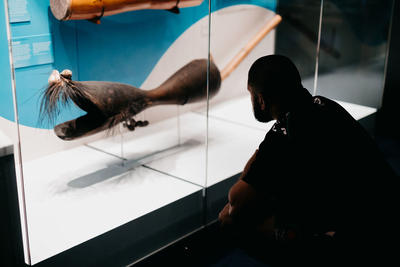Pottery
Country
Papua New Guinea
State/Province
East New Britain
See full details
Object detail
Description
Potsherd - Lapita style
Classification
INDIGENOUS CULTURES Melanesian & South Sea Islander pottery
Maker
Measurements
L80 x W65 x D15mm
Media/Materials description
earthenware
History and use
Around 3300 years ago, a distinctive type of pottery with intricate geometric designs appeared for the first time in the Bismarck Archipelago of north-eastern New Guinea. Called 'Lapita', the ceramics became synonymous with the people who made them and continued to be made in various forms until between 2600 and 2200 years ago.
Bearers of Lapita pottery migrated eastwards to commence the 4500-km-long colonisation process of the Pacific. In many areas, generations of post-Lapita peoples continued elaborate pottery traditions using modified decorative designs and vessel forms. Lapita ceramics are so distinctive and unique that archaeologists can use them to track the movement of the people who made them.
This ceramic sherd was collected on Wuatam (Watom) Island, Papua New Guinea and donated to the Queensland Museum in 1989.
This item was most recently on display in the exhibition 'Connections across the Coral Sea: A story of movement' at Museum of Tropical Queensland (2021-2022) and Queensland Museum (2022-2023).
Bearers of Lapita pottery migrated eastwards to commence the 4500-km-long colonisation process of the Pacific. In many areas, generations of post-Lapita peoples continued elaborate pottery traditions using modified decorative designs and vessel forms. Lapita ceramics are so distinctive and unique that archaeologists can use them to track the movement of the people who made them.
This ceramic sherd was collected on Wuatam (Watom) Island, Papua New Guinea and donated to the Queensland Museum in 1989.
This item was most recently on display in the exhibition 'Connections across the Coral Sea: A story of movement' at Museum of Tropical Queensland (2021-2022) and Queensland Museum (2022-2023).
Registration number
E14974.1




